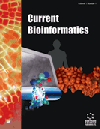
Full text loading...
Gene expression is regulated in a spatiotemporal manner, and the roles of microProteins (MiPs) in this concept have started to become clear in plants.
Here, a microarray data analysis was carried out to decipher the spatiotemporal role of MiPs in embryo development. The guilt-by-association method was used to determine the corresponding regulatory factors.
Module network analyses and protein-protein interaction (PPI) assays suggested 13 modules for embryo development in the Arabidopsis model plant. Various biological processes such as metabolite biosynthesis, hormone transition and regulation, fatty acid and storage protein biosynthesis, and photosynthesis-related processes were prevalent. Different transcription factors (TFs) at different stages of embryo development were found and reviewed. Furthermore, 106 putative MiPs were identified that might be involved in the regulation of embryo development. Candidate hub MiPs (15) at embryo developmental stages were identified by PPI network analysis and their putative regulatory roles were discussed. Previously reported MiPs, AT1G14760 (KNOX), AT5G39860 (PRE1), and AT2G46410 (CPC), were noted to be present in modules M3 and M8.
Molecular comprehension of regulatory factors including MiPs and TFs during embryo development allows targeted breeding of the corresponding traits and genome-based engineering of value-added new varieties.

Article metrics loading...

Full text loading...
References


Data & Media loading...
Supplements

